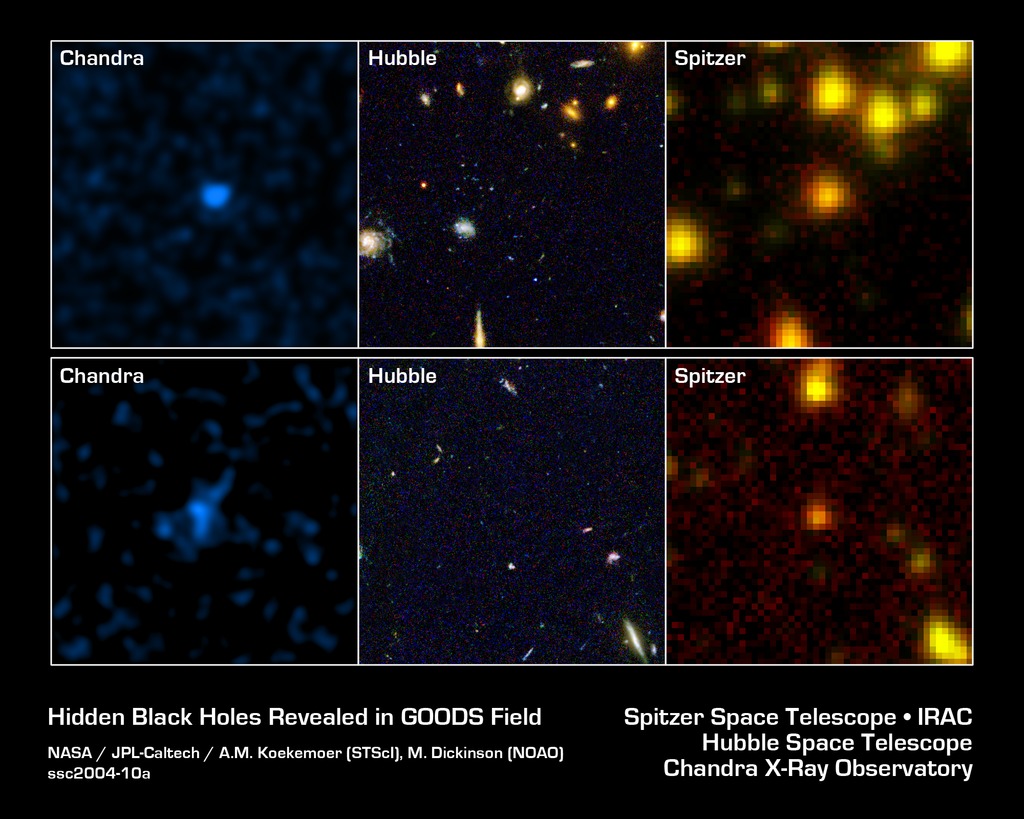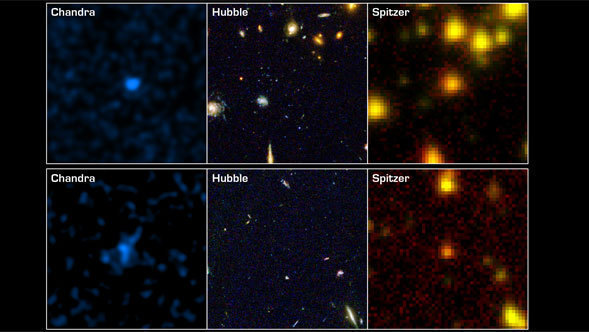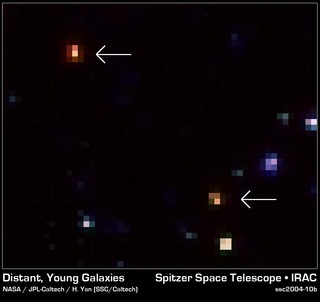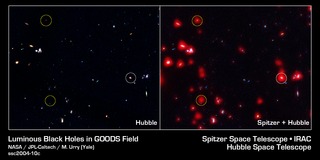
Credit: NASA/JPL-Caltech/STScI
Observation • June 1st, 2004 • ssc2004-10a
ssc2004-10a
In a collaborative effort between NASA's three Great Observatories, astronomers have solved a cosmic mystery by identifying some of the oldest and most distant black holes.
The two rows of this image show two patches of sky, both contained within the field known as the Great Observatories Origins Deep Survey, or GOODS. In the first column, observations from the Chandra X-ray Observatory show high-energy emissions believed to trace the presence of supermassive black holes, which power the bright cores of distant galaxies.
The mystery emerges in the second column. While most of the black hole candidates observed by Chandra could easily be identified within host galaxies seen by NASA's Hubble Space Telescope, several of them, like the two pictured here, showed no sign of a galaxy in visible light.
The images in the third column, from NASA's Spitzer Space Telescope, show the same region in infrared light. In these images, the otherwise invisible galaxies reappear. These unusually "reddened" objects may be shrouded in dense clouds of obscuring dust, or may be remarkably distant compared to other galaxies in the same field. Additional Spitzer observations later this year should help astronomers determine the nature of these unusual objects.
About the Object
- Name
- Great Observatories Origins Deep Survey
- Type
- Star > Evolutionary Stage > Black Hole
Color Mapping
| Band | Wavelength | Telescope |
| X-ray | Chandra | |
| Optical | Hubble | |
| Infrared | Spitzer |







